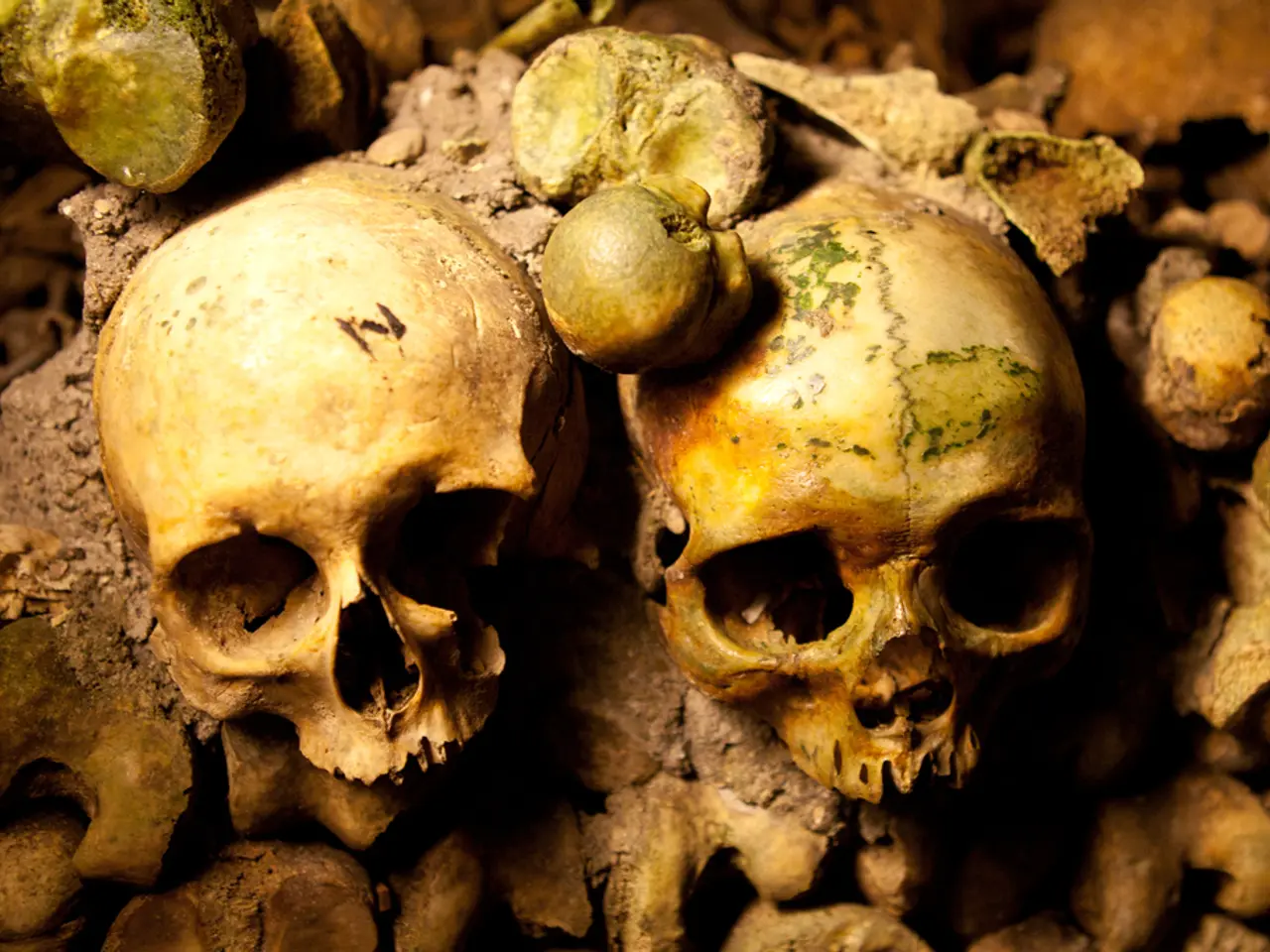Investigative delays in establishing identity for deceased individuals - Delay in Identifying Deceased Individuals
Identifying the Unknown: The Challenges and Methods in Forensic Corpse Identification
Forensic medicine plays a crucial role in identifying corpses, a task that requires precision and a variety of methods. In Frankfurt am Main, under the leadership of Marcel Verhoff, this field is at the forefront of solving complex cases.
Common methods for corpse identification include forensic autopsy, fingerprint analysis, dental profiling, DNA analysis, radiological imaging, and support from forensic anthropology and entomology.
Forensic autopsy, or postmortem examination, is used to determine the cause and manner of death, as well as providing physical evidence for identification. Fingerprint analysis compares postmortem prints with known records, while dental profiling involves the comparison of ante- and postmortem dental radiographs and unique dental patterns. DNA analysis from various tissues, especially teeth, can provide a profile for comparison with ante-mortem samples from relatives or databases. Radiological imaging compares ante- and postmortem X-rays for skeletal features or implants.
However, these methods can encounter challenges. Identification can take longer depending on the degree of decomposition and available material. In more difficult cases, a longer identification process may be due to poor body condition, lack or unavailability of ante-mortem records, complex case logistics, technical and logistical delays, legal and procedural factors, or multidisciplinary coordination needs.
In Frankfurt am Main, these challenges can be exacerbated by a high caseload volume, coordination with local law enforcement, and requirements under the German legal framework.
In doubtful cases, forensic pathologists may use a combination of methods for identification. If a person had no dental work or if they had a full denture with no natural teeth left, a dental comparison may be inconclusive. Relatives can be sought for identification, and a kinship report can be prepared. In extreme cases, a corpse may not be identifiable at all.
Previous X-rays or CT scans of a person can be compared to those of the corpse, but their availability depends on how long they are kept. Skull-photo comparisons can be made if photos of the person are available.
While these general factors hold worldwide, forensic institutes in urban centers like Frankfurt am Main may face additional challenges. In such cases, the combination of methods and the expertise of professionals like Marcel Verhoff become even more crucial in solving these complex cases.
Science and medical-conditions play a significant role in addressing challenges in forensic corpse identification, particularly in urban centers like Frankfurt am Main. For instance, health-and-wellness information can aid in the interpretation of data obtained through forensic autopsy, radiological imaging, and DNA analysis. Moreover, under the employment policy of such institutions, forensic pathologists are responsible for employing various identification methods, and the employment policy for experts in fields like forensic anthropology and entomology ensures that they are on hand to assist with difficult corpse identification cases.




